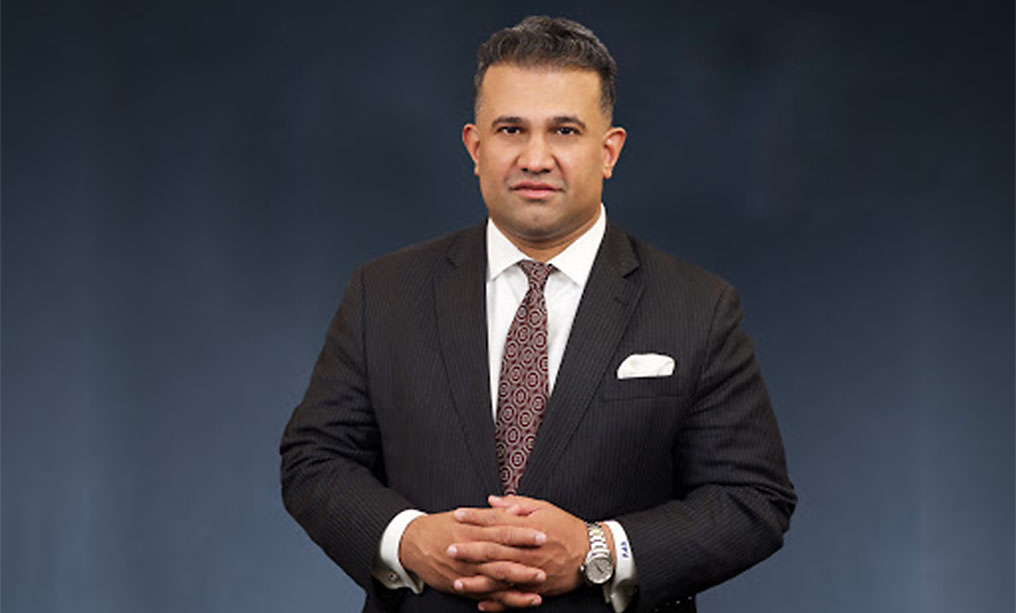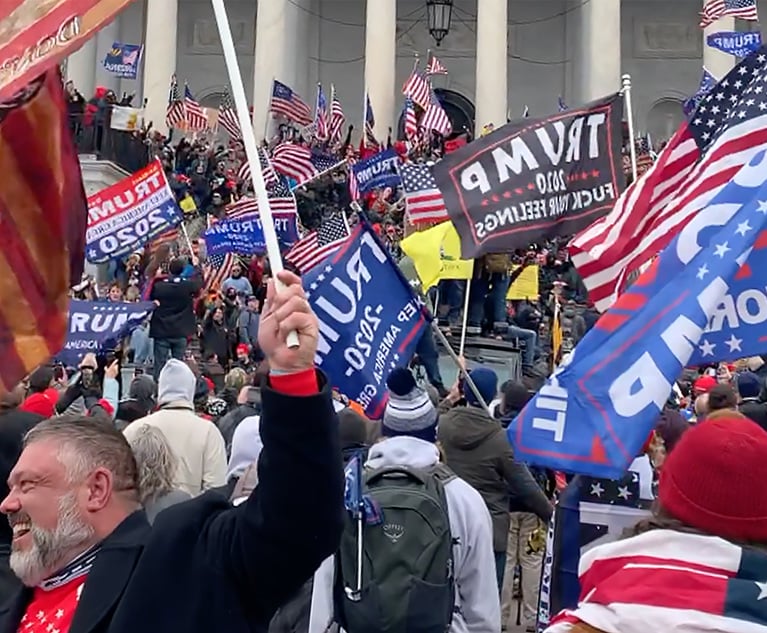To Ensure Justice for George Floyd, Derek Chauvin Must Get a Fair Trial
Despite the major step back with Keith Ellison's abuse of prosecutorial discretion, we've come a long way since Daniel Pantaleo choked Eric Garner to death.
June 17, 2020 at 06:28 PM
7 minute read
 Vinoo Varghese
Vinoo Varghese
By now, almost everyone on the planet has seen the video of George Floyd dying under the knee of former Minneapolis police officer, Derek Chauvin. Since then, major U.S. cities have experienced violence and rioting the likes of which haven't been seen since the 1992 acquittal of the LAPD cops who beat Rodney King. In Minneapolis, Chauvin and his cohorts were fired and the local prosecutor charged Chauvin with third-degree murder and manslaughter. In the wake of nationwide rioting, Minnesota's governor appointed Attorney General Keith Ellison to take over the case.
As CNN noted, the whole world was watching Ellison and he responded by adding a second-degree murder charge for Chauvin and charging the other three officers as accessories, subjecting all of them to 40-year prison terms. The quick responses by the police and prosecutors to Floyd's death contrasted dramatically with the death of Eric Garner, who had also mouthed "I can't breathe" when NYPD Officer Daniel Pantaleo put him in a chokehold. Pantaleo was never charged, kept getting paid for five years, and was only fired last year.
As people worldwide demand "justice for George Floyd," what does that mean? Justice starts with ensuring that Chauvin and the others receive a fair trial, requires an understanding that the video doesn't tell all, and finally, recognizes that Ellison's "charge‐stacking" in response to public pressure is an abuse of prosecutorial discretion.
In determining the propriety of Ellison's actions, we have to scrutinize Floyd's autopsy. Floyd's official autopsy report revealed that he was high on fentanyl, a drug stronger than heroin, and had recently used methamphetamine—a dangerous combination that can lead to respiratory distress. Floyd also had COVID-19. The official autopsy, while classifying his death as a homicide, indicated that he died of a cardiopulmonary arrest and not from suffocation. The outside autopsy commissioned by Floyd's family indicated the cause of death was "asphyxiation from sustained pressure." Notably, one of the doctors who conducted the outside autopsy, Dr. Michael Baden, also completed outside autopsies on Garner, Michael Brown, and on Jeff Epstein. If the State attempts to use Baden's autopsy during Chauvin's trial, then any defense attorney worth his salt will attack Dr. Baden as a hired gun.
When you add in that the 911 call from the store clerk where Floyd allegedly tried to pass a counterfeit bill described Floyd as "awfully drunk" and "not in control of himself," the picture gets murkier. Moreover, other videos obtained by The Washington Post and The New York Times show Floyd resisting arrest in getting out his original car, and then struggling with officers in the backseat of the police car.
The upgraded criminal complaint notes that the autopsy revealed Floyd had underlying health conditions including arteriosclerosis and hypertensive heart disease. These health conditions, a dangerous combination of narcotics in his blood, and the police officers' restraints obviously all contributed to Floyd's death.
Additionally, this wasn't Floyd's first run-in with the law. In 2009, in Texas, he was sentenced to five years' prison for aggravated robbery with a deadly weapon for a home invasion of a pregnant woman. He previously served time for drug and gun related offenses.
After his legal troubles, he worked security with Chauvin at a Minneapolis club. If Chauvin knew about Floyd's violent history, that fact combined with Floyd's size (6"7), and Floyd's drug-induced behavior at the scene resisting arrest, it may explain Chauvin's knee on Floyd's neck.
Furthermore, the neck hold used by Chauvin was legal, and only in the aftermath of Floyd's death is Minnesota attempting to ban it. With all these factors, the State will have a difficult time sustaining a conviction for second- or third-degree murder.
Per the language of Minnesota's third degree murder statute, Chauvin, must have caused "the death of another by perpetrating an act eminently dangerous to others and evincing a depraved mind, without regard for human life." With a legal knee hold and Chauvin experiencing first-hand Floyd's drug-induced state, the State will have a difficult time proving that Chauvin acted with a "depraved mind without regard for human life."
This leads us to Ellison's add-on or charge-stacking of second degree murder, where the State must prove that Chauvin "cause[d] the death of a human being, without intent to effect the death of any person, while committing or attempting to commit a felony offense." That's a mouthful, but in simpler terms, this is Minnesota's version of the "felony murder" statute. In other words, you can get charged with murder without intending to commit murder if someone dies while you're committing a felony, i.e. you unintentionally kill someone while committing a bank robbery.
Here, Ellison is alleging that Chauvin killed Floyd while assaulting him. This is a tall order for Ellison. From the 911 call and the store clerk's identification of Floyd as the perpetrator of a crime, the police had probable cause to believe that he had committed a crime. Floyd then resisted arrest. For someone like me, a criminal defense attorney and former prosecutor, logic and experience dictate that if a person resists arrests, the chances of him getting injured rise dramatically. Cops can't be prosecuted for using reasonable force while effecting a lawful arrest. The question remains then, what is "reasonable" force and whether keeping a knee on Floyd's neck was reasonable or necessary with two other officers also restraining a handcuffed Floyd lying on his stomach.
Let's get back to the original second degree manslaughter charge. For the State, this is the most viable charge because it could successfully argue that with Chauvin's knee on Floyd's neck, with Floyd's repeated pleas that he couldn't breathe, Chauvin "creat[ed] an unreasonable risk, and consciously t[ook]chances of causing death or great bodily harm to [Floyd]."
This brings us back to AG Ellison and his abuse of prosecutorial discretion. The local prosecutor had a viable prosecution, yet, Ellison, appointed by the governor, gave into public pressure by piling on a charge which he has little chance to prove. Ellison admitted that "winning a conviction will be hard," and noted that there had been only one prior successful prosecution in Minnesota of a police officer for murder. Ellison also said he felt a "tremendous sense of weight"—likely the immense pressure and calls for "justice" by protestors and the governor that led to the upgraded charges against Chauvin.
By unreasonably upgrading the charges against Chauvin, however, Ellison bargained with the public, and gave into demands for blood not "justice." Ellison abused his power in placating the masses. Manslaughter is a viable charge, third-degree murder is a stretch, but second-degree murder is out of bounds. How will Ellison appease, if Chauvin is acquitted of second-and third-degree murder?
Even with the video footage, the State has the burden of proving beyond a reasonable doubt that Chauvin used unauthorized "deadly" force. With the guerrilla tactic of prosecutors charge-stacking as Ellison did here, and what the National Association of Criminal Defense Lawyers call a "trial penalty," punishing someone for exercising one's constitutional right to a jury trial, Chauvin may plead to manslaughter to avoid the chance of spending 40 years in prison.
To achieve justice for Floyd, Chauvin and his fellow former cops must get a fair trial. Despite the major step back with Ellison's abuse of prosecutorial discretion, we've come a long way since Daniel Pantaleo choked Eric Garner to death.
Vinoo Varghese is a criminal defense attorney and former prosecutor.
This content has been archived. It is available through our partners, LexisNexis® and Bloomberg Law.
To view this content, please continue to their sites.
Not a Lexis Subscriber?
Subscribe Now
Not a Bloomberg Law Subscriber?
Subscribe Now
NOT FOR REPRINT
© 2025 ALM Global, LLC, All Rights Reserved. Request academic re-use from www.copyright.com. All other uses, submit a request to [email protected]. For more information visit Asset & Logo Licensing.
You Might Like
View All
The Public Is Best Served by an Ethics Commission That Is Not Dominated by the People It Oversees
4 minute read
The Crisis of Incarcerated Transgender People: A Call to Action for the Judiciary, Prosecutors, and Defense Counsel
5 minute read
‘Catholic Charities v. Wisconsin Labor and Industry Review Commission’: Another Consequence of 'Hobby Lobby'?
8 minute readTrending Stories
Who Got The Work
J. Brugh Lower of Gibbons has entered an appearance for industrial equipment supplier Devco Corporation in a pending trademark infringement lawsuit. The suit, accusing the defendant of selling knock-off Graco products, was filed Dec. 18 in New Jersey District Court by Rivkin Radler on behalf of Graco Inc. and Graco Minnesota. The case, assigned to U.S. District Judge Zahid N. Quraishi, is 3:24-cv-11294, Graco Inc. et al v. Devco Corporation.
Who Got The Work
Rebecca Maller-Stein and Kent A. Yalowitz of Arnold & Porter Kaye Scholer have entered their appearances for Hanaco Venture Capital and its executives, Lior Prosor and David Frankel, in a pending securities lawsuit. The action, filed on Dec. 24 in New York Southern District Court by Zell, Aron & Co. on behalf of Goldeneye Advisors, accuses the defendants of negligently and fraudulently managing the plaintiff's $1 million investment. The case, assigned to U.S. District Judge Vernon S. Broderick, is 1:24-cv-09918, Goldeneye Advisors, LLC v. Hanaco Venture Capital, Ltd. et al.
Who Got The Work
Attorneys from A&O Shearman has stepped in as defense counsel for Toronto-Dominion Bank and other defendants in a pending securities class action. The suit, filed Dec. 11 in New York Southern District Court by Bleichmar Fonti & Auld, accuses the defendants of concealing the bank's 'pervasive' deficiencies in regards to its compliance with the Bank Secrecy Act and the quality of its anti-money laundering controls. The case, assigned to U.S. District Judge Arun Subramanian, is 1:24-cv-09445, Gonzalez v. The Toronto-Dominion Bank et al.
Who Got The Work
Crown Castle International, a Pennsylvania company providing shared communications infrastructure, has turned to Luke D. Wolf of Gordon Rees Scully Mansukhani to fend off a pending breach-of-contract lawsuit. The court action, filed Nov. 25 in Michigan Eastern District Court by Hooper Hathaway PC on behalf of The Town Residences LLC, accuses Crown Castle of failing to transfer approximately $30,000 in utility payments from T-Mobile in breach of a roof-top lease and assignment agreement. The case, assigned to U.S. District Judge Susan K. Declercq, is 2:24-cv-13131, The Town Residences LLC v. T-Mobile US, Inc. et al.
Who Got The Work
Wilfred P. Coronato and Daniel M. Schwartz of McCarter & English have stepped in as defense counsel to Electrolux Home Products Inc. in a pending product liability lawsuit. The court action, filed Nov. 26 in New York Eastern District Court by Poulos Lopiccolo PC and Nagel Rice LLP on behalf of David Stern, alleges that the defendant's refrigerators’ drawers and shelving repeatedly break and fall apart within months after purchase. The case, assigned to U.S. District Judge Joan M. Azrack, is 2:24-cv-08204, Stern v. Electrolux Home Products, Inc.
Featured Firms
Law Offices of Gary Martin Hays & Associates, P.C.
(470) 294-1674
Law Offices of Mark E. Salomone
(857) 444-6468
Smith & Hassler
(713) 739-1250







